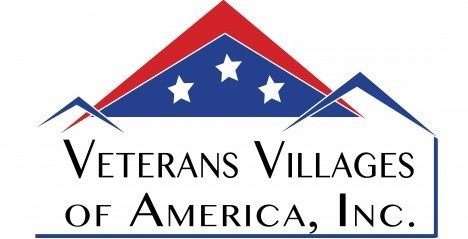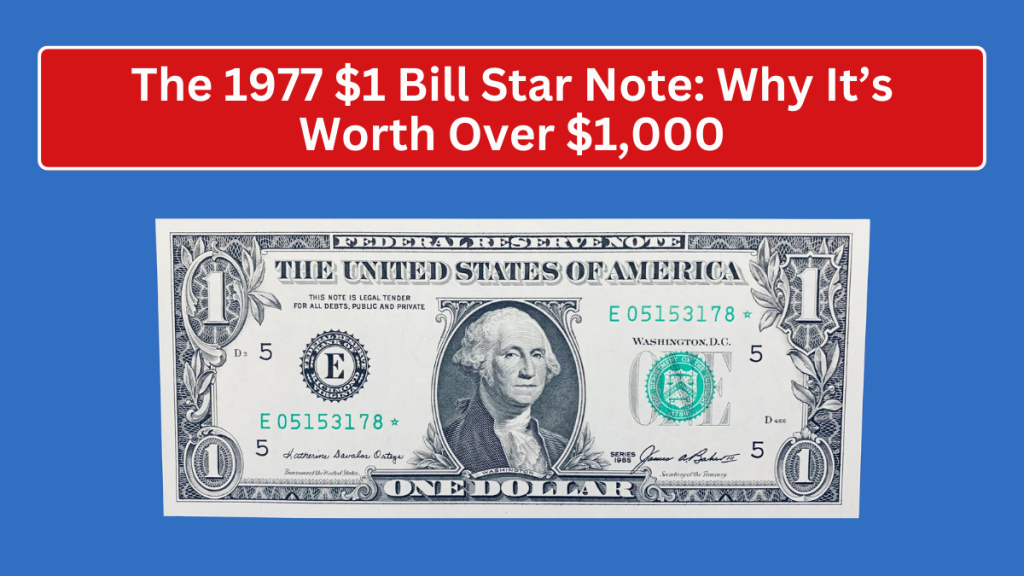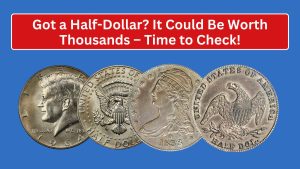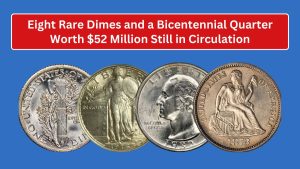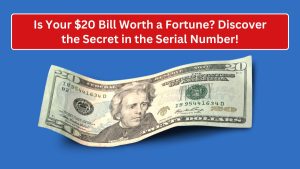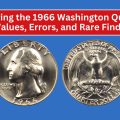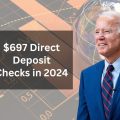When most people think of a $1 bill, they imagine something of minimal monetary value. However, a specific type of $1 bill from 1977, known as a “Star Note,” can fetch prices upwards of $1,000 in the collectors’ market.
This article will explore why the 1977 $1 Star Note is so valuable, factors that influence its price, eligibility criteria, and the associated payment dates for those interested in selling or trading such notes.
What is a Star Note?
A Star Note is a type of replacement currency issued by the Bureau of Engraving and Printing (BEP) when an error occurs during the printing process.
Instead of scrapping the entire batch of misprinted bills, the BEP replaces the faulty ones with Star Notes, distinguished by a small star symbol next to the serial number. Because these notes are printed in smaller quantities, they are considered rarer and more valuable to collectors.
Why is the 1977 $1 Star Note Worth Over $1,000?
Several factors contribute to the high value of the 1977 $1 Star Note, including:
- Print Runs: The size of the print run greatly affects a Star Note’s rarity and value. Smaller print runs make the notes rarer. In the case of the 1977 series, some print runs were as low as 640,000 notes.
- Condition: The condition of the note is another critical factor. A note in uncirculated condition (no creases, marks, or damage) can fetch prices of up to $1,000 or more, while those in poorer condition may be worth only a fraction of that.
- Federal Reserve Bank (FRB) Issuance: The 1977 $1 Star Notes were issued by 12 different FRBs across the U.S., including Atlanta, Boston, Chicago, and others. Some FRBs printed fewer Star Notes than others, which increases the rarity of notes from specific regions.
Eligibility Criteria for High Value
Not all 1977 $1 Star Notes are worth over $1,000. Here’s what makes a note potentially valuable:
- Low Serial Numbers: Notes with unique or low serial numbers, such as those starting with multiple zeros (e.g., 00000123*), can significantly increase a bill’s worth.
- Rarity of FRB Issue: Some Federal Reserve Banks issued fewer Star Notes, making these specific notes rarer and more valuable.
- Condition: Uncirculated notes (graded between 64 and 70 on the currency grading scale) are much more valuable than circulated notes.
- Misprints or Errors: In some cases, Star Notes that include misprints, off-center designs, or other unique errors can command higher prices.
How to Determine the Value of Your 1977 $1 Star Note
If you own a 1977 $1 Star Note and want to know its worth, consider the following steps:
- Serial Number Lookup: Several online tools allow you to check the rarity of your Star Note based on its serial number and issuing Federal Reserve Bank. Some popular lookup tools include the Star Note Lookup by MyCurrencyCollection and various auction house websites.
- Condition Check: Get your note professionally graded by a certified grading service like the Paper Money Guaranty (PMG) or the Professional Coin Grading Service (PCGS).
- Consult Collectors: Online forums, currency trading groups, and auction houses are excellent resources for assessing the market value of rare notes.
Payment Dates and Selling Process
If you wish to sell your 1977 $1 Star Note, the payment process typically follows these steps:
- Auction Houses: Major auction houses like Heritage Auctions regularly hold currency auctions where you can list your rare Star Notes. Depending on the auction schedule, payment is typically processed within 30 days after the sale.
- Online Marketplaces: Websites like eBay also offer opportunities to sell Star Notes, though the selling process might be more immediate depending on buyer interest.
- Dealers and Collectors: Currency dealers or private collectors may offer to buy your note outright. This method can be faster, but the value might be lower than at auction.
Key Information About the 1977 $1 Star Note
| Feature | Details |
|---|---|
| Year | 1977 |
| Type | Federal Reserve Note |
| Distinct Mark | Star symbol next to the serial number |
| Issued By | 12 Federal Reserve Banks |
| Rarity Factor | Print run size, issuing FRB, condition |
| High Value | Up to $1,000 or more for uncirculated notes |
| Common Sale Methods | Auction houses, online platforms, collectors |
| Best Grading Services | PMG, PCGS |
Conclusion
The 1977 $1 Star Note represents a fascinating piece of U.S. currency history. Its high value, sometimes reaching $1,000 or more, depends on several factors including rarity, condition, and serial number. If you own one, it’s worth checking its potential value and considering your selling options to get the best price.
FAQs
1. What makes the 1977 $1 Star Note valuable?
The note’s rarity, condition, and specific Federal Reserve Bank issuance contribute to its value, especially if it was part of a small print run.
2. How can I check the value of my Star Note?
You can use online lookup tools, consult professional currency graders, or approach auction houses to determine its value.
3. Where can I sell my 1977 $1 Star Note?
Auction houses, online marketplaces like eBay, and currency dealers are popular venues for selling these notes.
4. What is the highest price a 1977 $1 Star Note has fetched?
Uncirculated 1977 $1 Star Notes in pristine condition have sold for over $1,000 at auction.
5. Are there any other valuable Star Notes I should look for?
Yes, other valuable Star Notes include rare series from 1928, 1934, and 1953, which can fetch high prices depending on their condition and rarity.
References
- U.S. Currency Auctions – Details on the rarity and value of various Star Notes, including the 1977 $1 bill(US Currency Auctions).
- Paper Money Wanted – In-depth analysis of the 1977 $1 Green Seal Federal Reserve Note and its variations(Paper Money Wanted).
- Old Currency Values – Information on how print run size and condition affect the value of Star Notes(Old Currency Values).
